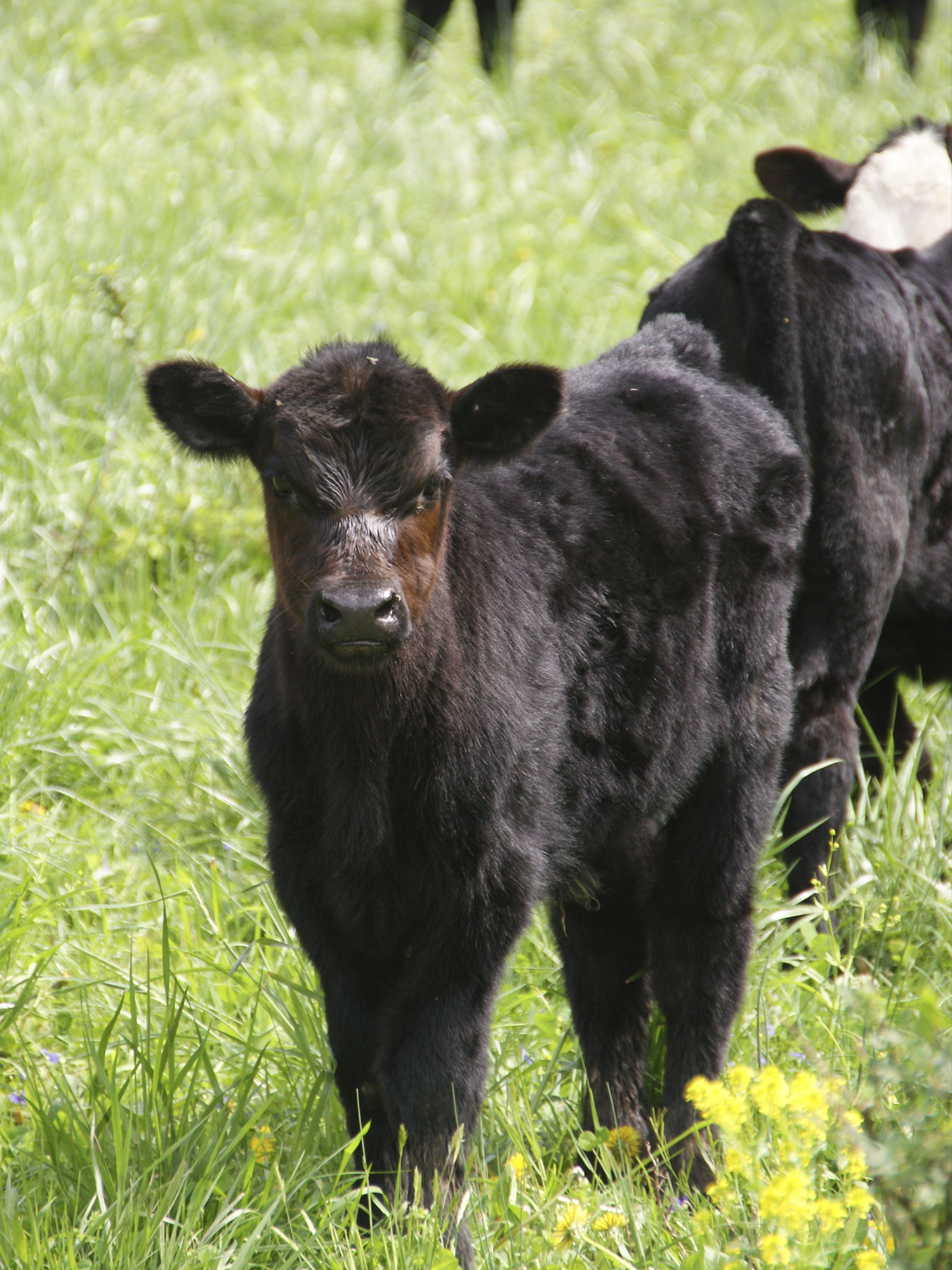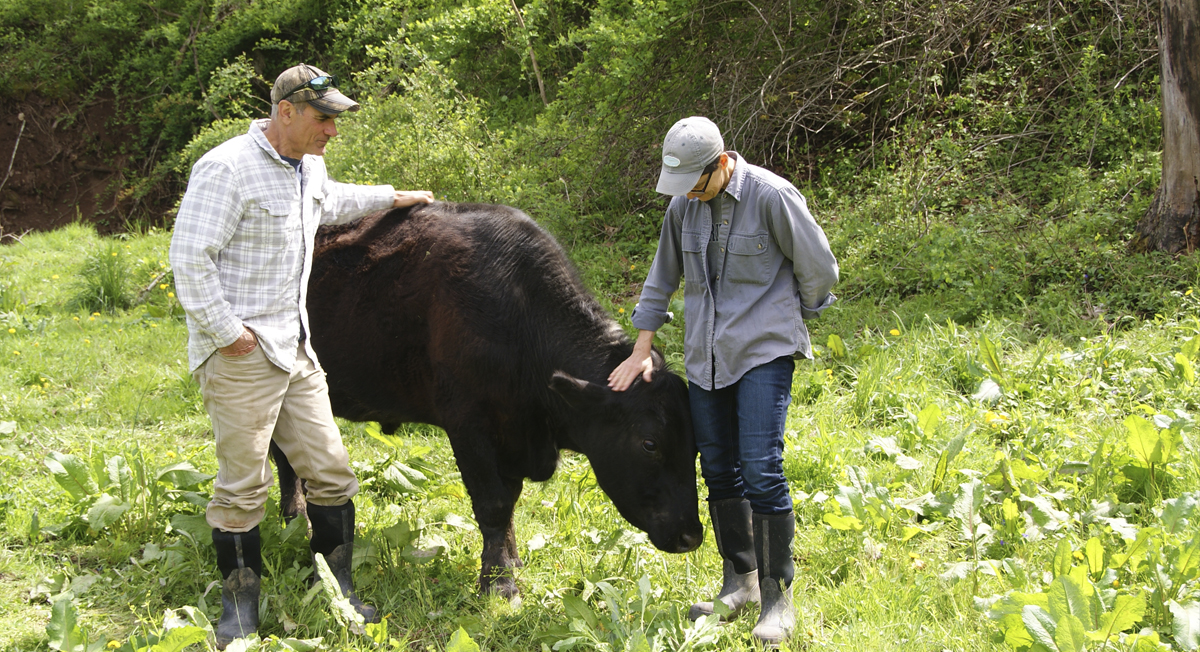
Sustainably Raised
Our cattle are raised and finished for butchering solely on open native grass pastures spring, summer and fall, and on hay in the winter. We do not feed corn, soybeans or other grains.
Our cattle are not fed GMO-containing feed, antibiotics or growth enhancing hormones and or steroids. Additionally, our pastures are maintained by mowing and are never treated with herbicides (Round-Up) or pesticides to control undesirable weeds.
Cross Genetics
We raise Black Angus and Black Angus cross bred with a variety of other breeds.
Black Angus cattle are known for their genetic traits that produce meat that is well marbled, tender and flavorful. Good marbling means the fat and beneficial Omega-3 rich fatty acids are evenly dispersed throughout the meat, ensuring consistent texture, juiciness and most importantly delicious beef flavor.
Other breeds bring important characteristics to the animals:
• Hereford cattle have a temperament that is very calm and docile, which allows for easy handling and good feed conversion efficiency. They are naturally "Low Input” cattle and have an excellent grass to meat conversion efficiency, meaning that their heirloom genetics allow them to more obtain the necessary nutrition from just eating pasture grass alone without the need for additional energy supplementation.
• Red Angus are known for several beneficial traits. They are adaptable to severe weather—both heavy rainfall and very hot weather. They are very gentle and calm. Red Angus also demonstrate excellent insect resistance.
• Simmental are generally heavy resulting in a higher yield of saleable meat. They also exhibit excellent marbling and good growth rates. A subset of Simmental is the SimAngus breed. This cross brings in marbling and flavor to the beef from the Angus and a fast-growing calf.
• Baldie (or Black Baldie) cattle are the result of cross breeding Angus and Hereford cattle. These cattle exhibits the best (dominant) genetic characteristics of both breeds with excellent meat quality, low production input requirements and a gentle, calm disposition. The Baldie Cow (F-1 Female) is also well known for their superior mothering characteristics such as higher milk production and calving ease.
Sustainable
We practice the principles of MIG (Management Intensive Grazing) grazing much like that of Joel Salatin’s Polyface Farms.
Our rotational grazing practice attempts to mimic those of nature by offering pasture resting / healing periods which maximizes both plant and soil health therefore increasing the nutritional value of the pasture grasses and increasing the animal’s overall living comfort by allowing them to range freely within the pastures.
Our farming practices not only increase the health of our own cattle, but they also benefit the wildlife and plant life that share the same pastures and woodlands. Benefits also include improved animal productivity, increased plant diversity, conservation of environmental resources, accumulation of soil carbon and mineral content, and improved animal temperament. Our farming practices and values attempt to improve our symbiotic relationship with nature and the environment with an ultimate end goal of leaving our farm in better more sustainable condition than when we found it.

We are certified by the Beef Quality Assurance (BQA) Program.
The standards for quality and safety set by BQA help us meet our goals to:
- Raise healthy cattle that produce safe and wholesome beef.
- Raise our cattle employing environmentally sound and sustainable practices.
- Manage our herd to produce beef that meets the quality expectations of our customers.
- Manage our herd to meet FDA, USDA, and EPA standards.
